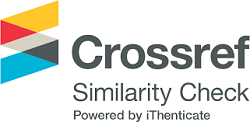Full-Color III-Nitride Nanowire Light-Emitting Diodes
Abstract
III-nitride nanowire-based light-emitting diodes (LEDs) have been intensively studied as promising candidates for future lighting technologies. Compared to conventional GaN-based planar LEDs, III-nitride nanowire LEDs exhibit numerous advantages including greatly reduced dislocation densities, polarization fields, and quantum-conned Stark effect due to the effective lateral stress relaxation, promising high-efficiency full-color LEDs. Beside these advantages, however, several issues have been identified as the limiting factors for further enhancing the nanowire LED quantum efficiency and light output power. Some of the most probable causes have been identified as due to the lack of carrier confinement in the active region, non-uniform carrier distribution, electron overflow, and the nonradiative recombination along the nanowire lateral surfaces. Moreover, the presence of large surface states and defects contribute significantly to the carrier loss in nanowire LEDs. Consequently, reported nanowire LEDs show relatively low output power. Recently, III-nitride core-shell nanowire LED structures have been reported as the most efficient nanowire white LEDs with a record-high output power which is more than 500 times stronger than that of nanowire white LEDs without using core-shell structure. In this context, we will review the current status, challenges, and approaches for the high-performance IIInitride nanowire LEDs. More specifically, we will describe the current methods for the fabrication of nanowire structures including top-down and bottom-up approaches, followed by characteristics of III-nitride nanowire LEDs. We will then discuss the carrier dynamics and loss mechanism in nanowire LEDs. The typical designs for the enhanced performance of III-nitride nanowire LEDs will be presented next. The color-tunable nanowire LEDs with emission wavelengths in the visible spectrum and phosphor-free nanowire white LEDs will be finally discussed.

This is an Open Access article distributed under the terms of the Creative Commons Attribution License (http://creativecommons.org/licenses/by/4.0/), which permits unrestricted use, distribution, and reproduction in any medium provided the original work is properly cited.
Full Text:
PDFTime cited: 0
DOI: http://dx.doi.org/10.25073/jaec.201934.271
Refbacks
- There are currently no refbacks.
Copyright (c) 2019 Journal of Advanced Engineering and Computation









